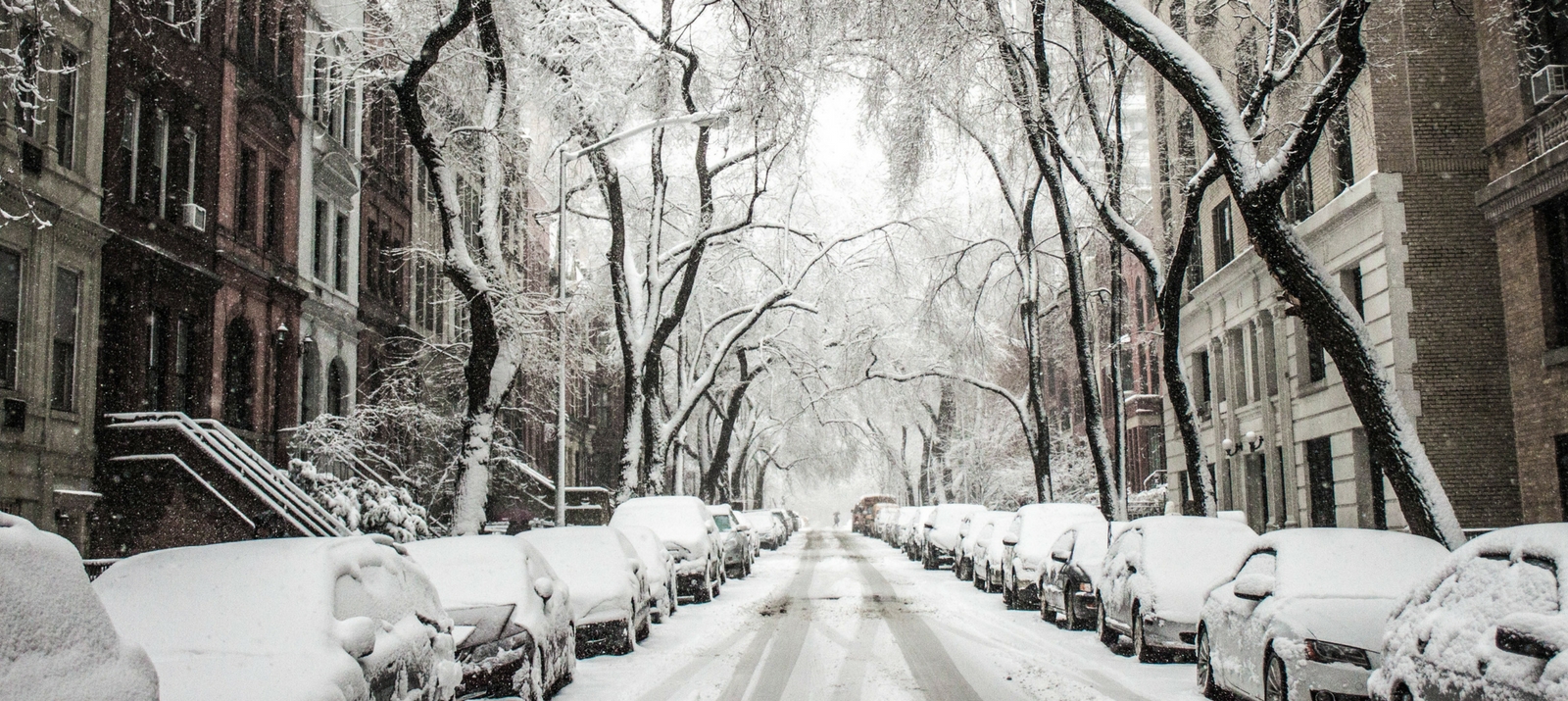Moving in the winter is not ideal for the obvious reason: Depending on where you live, it’s probably going to be freezing. Perhaps even rainy, snowy, or icy. This means not only can the experience not be fun, it can also potentially be slippery and unsafe.
If you don’t really have the option to move during a different time of year, don’t worry. An upside to moving in the winter is that you could end up saving a lot of money during the moving slow season. Plus, you’ll probably be able to get more options for which services you can get and when you can use them because there’s less demand.
Here are 17 of our best winter moving tips for making the best of a not-so-ideal situation that’ll save you tons of money, stress, and time:
1. Check the weather for heavy snow, and plan accordingly.
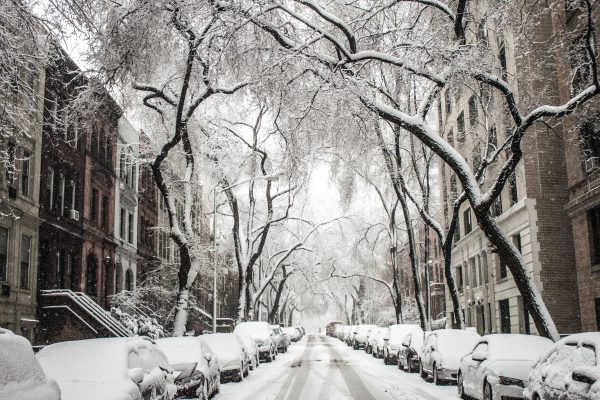
Maybe this is obvious, but it’s pretty important: Keep tabs on the weather throughout the week. If conditions get bad, consider rescheduling.
Moving your stuff is not worth risking your safety! And as mentioned above, moving companies are likely to have more flexibility in their schedules during the winter.
2. Check in with your movers a week before your moving day.

Whether you’re renting a truck, hiring movers, or a combination of the two, check in with them about a week ahead of the moving date. This is always good to do as a rule of thumb, but it’s especially good to do in the winter, just to make sure you’re on the same page.
It would stink to have them show up when you’re not ready, or to start turning off your heat and electricity and have the movers simply not show up.
3. Hire a babysitter to watch your kids and pet.
Moving with children and animals is hard. Moving children and animals in the winter is even harder. Consider trying to move boxes in the snow while also being responsible for smaller bodies that aren’t able to help move stuff.
If you can hire a babysitter for the day, or move during the school day, that’s ideal. As for animals, see if a friend can take them for the day, or drop them off at a pet daycare center.
If none of those options are available, see if someone you’re moving with can stay with them (kids and/or pets) at the new place you’re moving into.
We can’t store pets, but we can store pet toys.
4. Organize your stuff and label your boxes ahead of time.
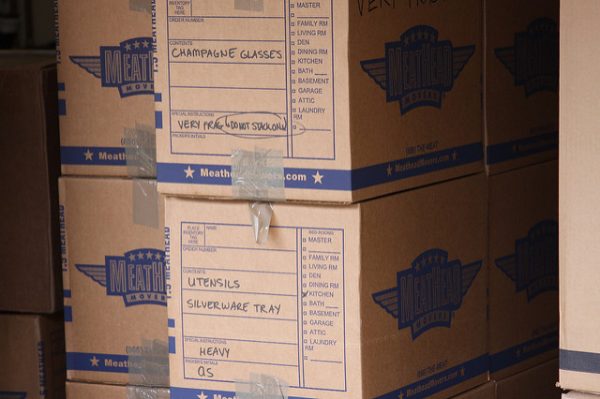
Make it so that you’re spending the least amount of time as possible scrambling last minute. You want your move to be fast and strategic, and organizing ahead of time will save you a ton of stress.
You don’t want to get stuck making a million trips in the cold, so make sure you know what you’re loading in first and roughly where it should all fit.
5. Transfer utilities from your old home to your new home.
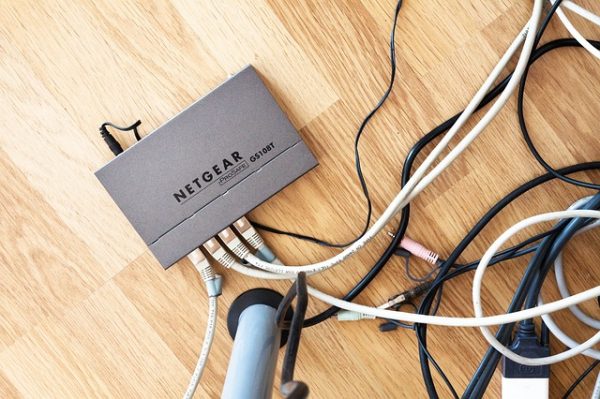
This step happens any time you move, but it’s even more important when moving during winter months. Call all your utility service providers (here’s how to transfer utilities when moving) and double check that your services are transferring on the correct day.
You might even want to have them turn the heat on in your new place a few days ahead of time. Because who wants to move into their new place if it’s absolutely freezing?
No one, that’s who.
6. Save money by asking your friends to help you move.

Save some cash, skip the movers, and enlist your friends. They probably won’t be tired of helping people move, like they might be during the summer, which is great for you.
7. Start moving early.

Another lovely part of winter is it feels like our days are cut in half. So get your move started early, so that if any hiccups occur, you’ll get them straightened out before it gets dark.
For your safety, and because it gets even more cold at night, don’t move when it’s dark!
8. Prep your car and walkways.
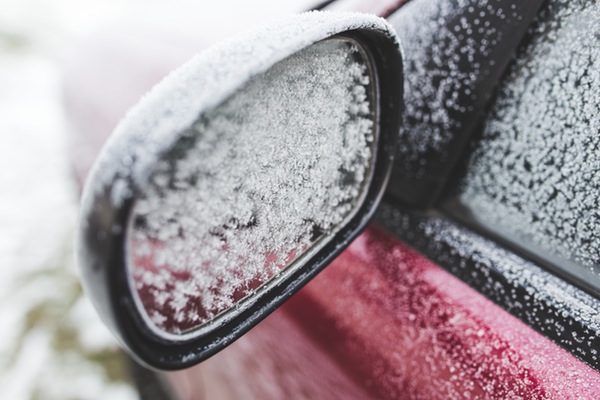
This rule really only applies for snow or excessive leaves, but it’s an important one:
Clear snow or leaves from your driveway and the street ahead of time, and throw salt on any ice you see around.
Lay tarps down so that if anything gets soggy or gross, your car won’t suffer too badly. You might also want to lay tarps down in both your old place and new place, just so you don’t need to do extra cleanup.
Finding cleaning supplies during a move should be the last of your worries.
9. Dress in layers, and wear water- and slip-proof boots.
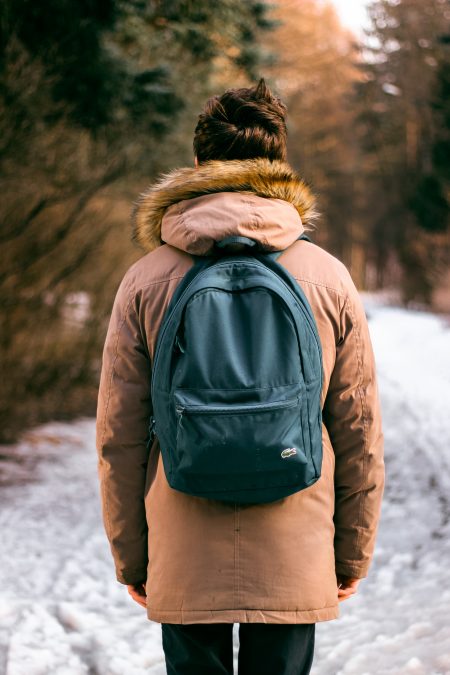
Even though it’ll be cold out, you will work up a sweat. So dress in layers so you can peel them off and drop them at your new home if it starts to get too hot.
And wear your best waterproof and slip-proof boots to combat snow, hail, rain, black ice, or whatever else winter throws at you at the eleventh hour.
10. Turn off the heat in both homes…

With so many people going in and out of your place, there’s really no point in trying to keep it warm. Save yourself a little money on heating and keep the heat off in both homes.
You’ll be bundled up and sweating beneath those layers, so you won’t even notice how cold it is.
11. …But do create a warm room.
Here’s a smart tip for moving in the winter from imove:
Leave a space heater on Low in the bathroom or in another small room. It’ll give you and the movers/your friends a space to catch their breath and warm up in between trips.
If you’re finding it hard to chug through the move, taking a moment to warm up can make a big difference.
12. Protect fragile items with bubble wrap.
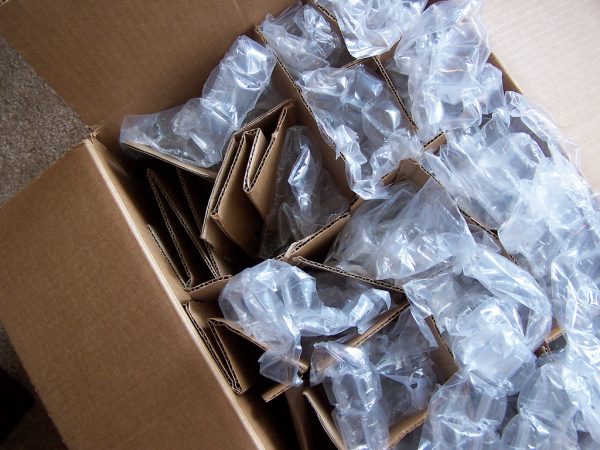
Glassware and other fragile items become more frigid and prone to breaking in the cold, so wrap them with bubble wrap. And because things are bound to be more slippery in the winter, double-wrapping fragile items is a good idea in case of a fall.
Electronics are also not fond of the cold. They also hate water, so you might want to even wrap a box full of electronics in a tarp if you have to move in the rain or snow.
13. Do not pack away your winter gear.
Obvious tip #2, but moving is stressful, and when we get stressed our brains often don’t work the way they should. Make sure to set aside your winter gear, like boots, jackets, hats, gloves, and scarves so that you have those to wear on moving day.
And while we’re at it, keep clean sheets and pillows handy and accessible. After a long day of moving in the cold, you don’t want to go rummaging through boxes before you can sleep.
14. Keep spare winter gear in your car.
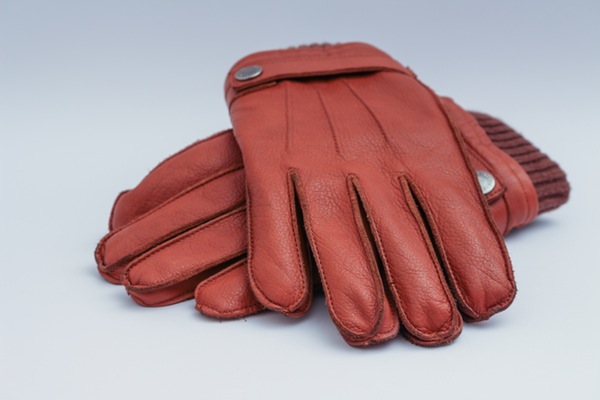
If you’re moving in snow or rain, your hands are bound to get wet. Keep an extra pair of gloves and stash an extra jacket somewhere in your car so that you can swap wet clothing items out if need be.
15. Have towels on deck.
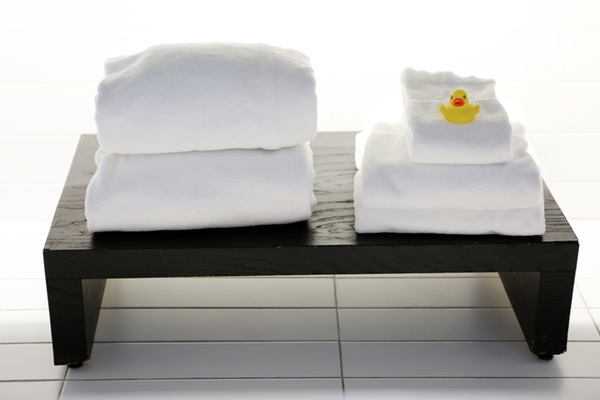
Much like keeping tarps around is a good idea to minimize cleanup, keeping towels around is an A+ idea as well. Keep some in your car in case you need to wipe down your boots, wipe down wet boxes, or clean up a spill (because hey, accidents happen).
16. Make a Crock-Pot of warm wintry goodness.

This isn’t a necessity as much as it is a great idea if you want to win the award for best mover: If you have a Crock-Pot, plug it in and have some congratulatory cider or hot chocolate going for when your team is finally done moving.
Or treat everybody to Starbucks if you don’t feel like making a vat of winter cheer. Either way, your friends/movers will thank you.
17. Leave moving and storage to the moving experts.
Odds are, moving company expenses will be lower now than during peak months, so you’ll still save money, stress, and time even if you hire professional movers to do everything for you.
Use an online service like Clutter to easily book a reputable, insured, and licensed professional moving company.
While you’re busy switching over utility services and calling a babysitter after moving, we’ll pick up and store anything you don’t plan on bringing to your new home.
We can also create an online catalog of everything you have in storage, so you don’t have to worry about where you left your summertime clothing. Because as we mentioned before, moving stress can do crazy things to your brain.
Schedule a Clutter pickup today, and cross off “storage” & “moving” from your winter moving checklist together.
This article was written by Hannah Van Arsdale, a freelance writer and dog person based in Portland, OR.


